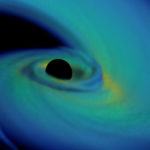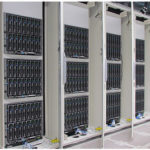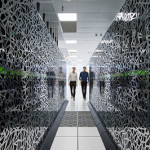In this video from SC17, researchers discuss the role of HPC in the Nobel Prize-winning discovery of gravitational waves, originally theorized 100 years ago by Albert Einstein in his general theory of relativity. “We are only now beginning to hear the vibrations of space-time that are all around us—we just needed a better ear. And when we detect that, we’re detecting the vibrations of everything that has ever moved in the universe. This is real. This is really there, and we’ve never noticed it until now.”
When Neutron Stars and Black Holes Collide
Working with an international team, scientists at Berkeley Lab have developed new computer models to explore what happens when a black hole joins with a neutron star – the superdense remnant of an exploded star. “If we can follow up LIGO detections with telescopes and catch a radioactive glow, we may finally witness the birthplace of the heaviest elements in the universe,” he said. “That would answer one of the longest-standing questions in astrophysics.”
NSF Funds HPC Cluster at Penn State
The Penn State Cyber-Laboratory for Astronomy, Materials, and Physics (CyberLAMP) is acquiring a high-performance computer cluster that will facilitate interdisciplinary research and training in cyberscience and is funded by a grant from the National Science Foundation. The hybrid computer cluster will combine general purpose central processing unit (CPU) cores with specialized hardware accelerators, including the latest generation of NVIDIA graphics processing units (GPUs) and Intel Xeon Phi processors.
Bull Supercomputer Aids Discovery of Gravitational Waves
The discovery of gravitational waves, announced by an international team of scientists, including Cardiff University’s Gravitational Physics Group, was verified using simulations of black-hole collisions produced on a Bull supercomputer. The discovery is being considered one of the biggest breakthroughs in physics for the last 100 years, as these tiny ripples in space-time offer new insights into theoretical physics and provide scientists with new avenues to explore the universe.







